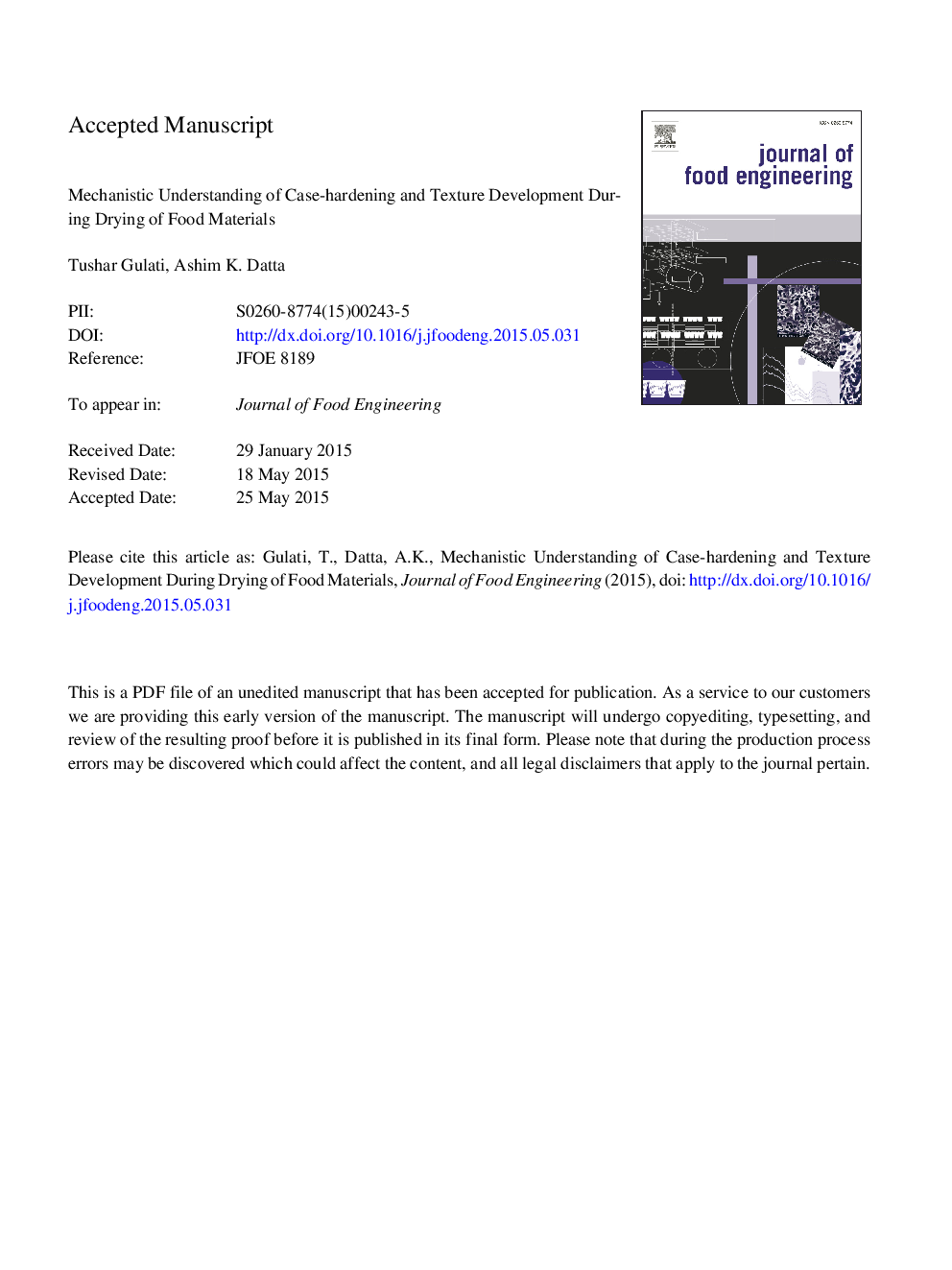| Article ID | Journal | Published Year | Pages | File Type |
|---|---|---|---|---|
| 6665157 | Journal of Food Engineering | 2015 | 64 Pages |
Abstract
A mechanistic framework for quality development such as shrinkage and case hardening in drying would allow new insights making the final quality in a drying process more predictable and controllable. A poromechanics model that includes multiphase (solid matrix/liquid water/vapor) transport and large deformation using hyperelastic constitutive relationship between the stress and strain is developed. Moisture and state (rubbery/glassy) dependent mechanical and transport properties are used. A complex shrinkage pattern that is not simply equal to the amount of water lost is observed at low moisture contents due to glass transition of the material. For high drying rates, the surface dries out faster than the core and forms a case-hardened layer resulting in early deviations in shrinkage. In contrast, for low drying rates, deviations in shrinkage occur at extremely low moisture contents due to a gradual rubbery/glassy transition. Key quality attributes, such as degree of crust formation, are predicted from fundamentals.
Related Topics
Physical Sciences and Engineering
Chemical Engineering
Chemical Engineering (General)
Authors
Tushar Gulati, Ashim K. Datta,
